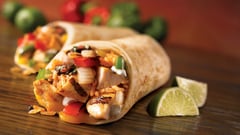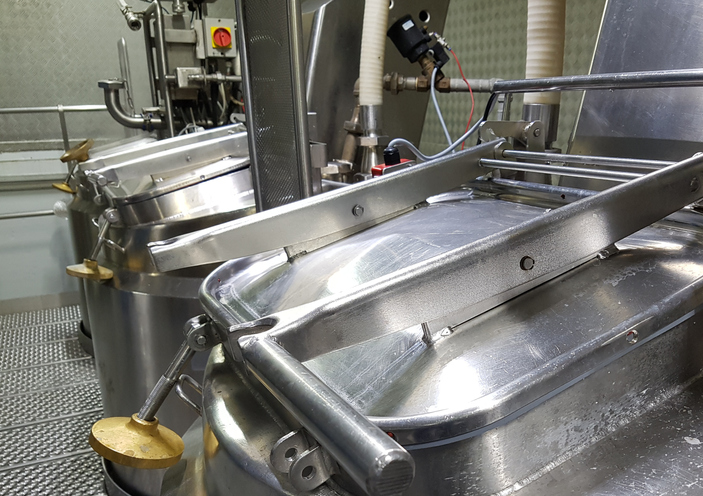Are you using a kettle to cook filling for ethnic foods like burritos or enchiladas? After cooking, how long does it take to cool it? Does speeding up the cooling process require the use of additional equipment that may be hard to clean?
If so, there may be a better way to chill.
Foods cooked in kettles sometimes need to go from a high of over 200 degrees down to 40. Processors want to lower temperature as quickly as possible, but achieving that can be a challenge. Finding the right cooling process is essential, especially for thicker mixes, such as meat and bean proteins whose viscosity increases significantly as they cool.
Pro's and cons' of the most common ways of reducing the temperature of food cooked in kettles are:
- Transferring the mixtures to another vessel
- Pro: Preserves kettle’s heat for faster cooking of next batch
- Con: Requires a second kettle and cooling system. Takes up more space.
- Running a glycol coolant through the kettle jacket
- Pro: Safer for workers. Takes up less space
- Con: Loss of kettle heat for subsequent batch; can take much longer to cool mixture.
- Running the mixture through an in-line heat exchanger
- Pro: Lower variable operating cost
- Con: Higher upfront capital cost. Equipment takes up a lot of floorspace. Thick mixtures are difficult to pump; piping is hard to clean as product cools and mixtures become pasty. Product remaining in kettle can be overcooked while waiting to chill through heat exchanger.
- Chilling with cryogenic gas while the mixture remains in the kettle
- Pro: Extreme cold reduces the temperature to 40 in less than one hour. Low capital cost. Easy to retrofit. Small footprint compared to heat exchangers. Easy to clean.
- Con: May have slightly higher variable cost.
For thicker or chunky foods and liquids, one option may be to use a cryogenic gas to cool the mixture in the kettle right after cooking. By injecting nitrogen into the bottom of the kettle – or even CO2 snow from horns in the top, the extreme cold reduces the temperature rapidly.
This approach is especially good for:
- Meat, bean or cheese filling for ethnic foods such as burritos and enchiladas

- High value sauces
- Hummus or other bean pastes
- Thick or chunky soups and
- Seafood mixes and pastes
If you are having challenges cooling a pumpable liquid product, it is worth investigating an inline cryogenic system.
Other benefits to consider with cryogenic systems for kettle cooling include:
- Small footprint, which saves floorspace.
- Fast
- Low capital cost
- Increased plant production efficiency and greater product throughput.
- Easy cleanup, thanks to newer, hygienic nozzles that mount flush at the bottom of the kettle’s interior and are self-sealing
- Flexible: systems injecting cryogen from the bottom can deliver either nitrogen or carbon dioxide
- Easy to use
Want to learn more about how using cryogen for kettle cooling from the bottom can boost your productivity? Click on the image below.




Comments
Messer makes no warranty of any kind with respect to the subject matter, the completeness, or accuracy of this blog. Messer is not responsible for any actions (or lack thereof) taken as a result of relying on or in any way using information contained in this blog. In no event shall Messer be liable for any damages resulting from reliance on or use of information in this blog. Readers should take advice from a qualified professional when dealing with specific situations. Descriptions of, or references or access to, other publications within this blog do not imply endorsement of those publications. This blog may contain technical inaccuracies and changes to the information may be made at any time.
Gas products are hazardous. The use or misuse of gas products involves serious risks, including injury, disability and death. Users of gas products must use the Safety Data Sheets for the gas products to warn their employees and others who are exposed to the gas products or hazards associated with such products.